ENGLAND
Manchester

Manchester
Manchester
Manchester is a city and district in the North West of England with an estimated population of 503,000. The city is located within the fourth largest urban area in the United Kingdom. The Manchester metropolitan area has 2.2 million inhabitants. The total area covers 115.65 km². The highest point of the city is only 38m.
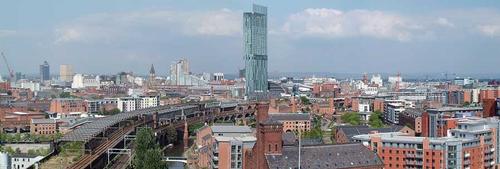 ManchesterPhoto: XAndreWx in the public domain
ManchesterPhoto: XAndreWx in the public domain
The city is especially famous for its architecture, culture, music scene, science, technology and sports. Manchester sports clubs include the Premier League football teams, Manchester City and Manchester United. One of the world's first railway stations was built here. Scientists first split an atom in Manchester. Manchester is the most visited city in the United Kingdom after London and Edinburgh.
Location
Manchester coordinates are: 53° 28' N 2° 14' W
Manchester is located in the south central part of North West England, surrounded by the Cheshire Plain to the south and the Pennines to the north and east. The city is located northwest of London. The city center is located on the east bank of the River Irwell, close to the confluence with the Medlock and Irk rivers. Manchester is low, at an elevation of about 40m above sea level. The River Mersey flows through the southern part of the city. The flat land, as well as the abundance of water from the rivers and the proximity to the coal mines influenced development as the world's first industrial city.
Weather
Manchester has a moderate maritime climate, just like in the rest of England. The weather has warm summers and cold winters. Rain falls all year round, the average annual rainfall is about 828mm. The humidity is quite high. Snowfall is quite rare in the city itself, but regularly falls on the wooded hills surrounding the city. The sun shines 1,416 hours a year. The highest measured temperature is 33.7 °C. The lowest measured temperature is -13.5 °C.
History
The main Celtic tribe built a stronghold in AD 72 in the part of Northern England, where today's city of Manchester is located. During the Roman conquest of Great Britain in the 1st century, a Roman fort was built in 79 AD. A settlement developed around the fort, which was granted city rights in 1301.
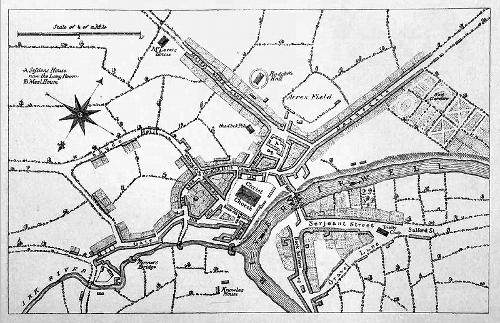 Manchester Map from 1650Photo: Public Domain
Manchester Map from 1650Photo: Public Domain
In the 14th century, many Flemish weavers settled in the city. They started developing the textile industry in this region. Manchester became an important center for the production and trade of wool and linen. In 1729, a stock exchange and numerous large warehouses were built. The city's history is closely linked to the rise of the textile industry during the Industrial Revolution. This gave impetus to the urbanization process.
At the beginning of the 19th century, the construction of factories made Manchester the most important industrial city in England. The Manchester Town Hall was built in 1877 and the Manchester Ship Canal in 1894. The city developed a wide range of industries, making Manchester the most important and largest industrial city in the world in 1835.
Sights
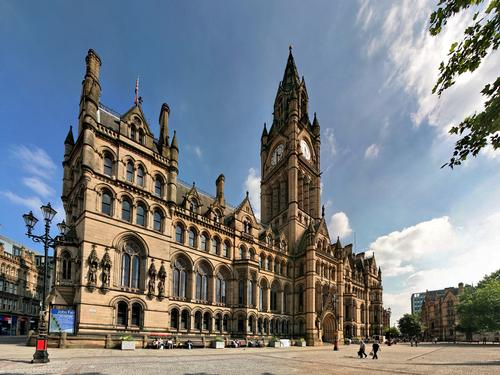 Manchester Town HallPhoto: Julius CC 3.0 Unported no changes made
Manchester Town HallPhoto: Julius CC 3.0 Unported no changes made
The city displays a wide variety of architectural styles, ranging from Victorian to contemporary architecture. Built in the Gothic Revival style, Manchester Town Hall in Albert Square is considered one of the most important Victorian buildings in England. A number of skyscrapers were built during the 1960s - 1970s. The tallest was the GOS Tower near Manchester Victoria station. In 2006 the even higher Beetham Tower was built. There are many monuments in Albert Square and in Piccadilly Gardens.
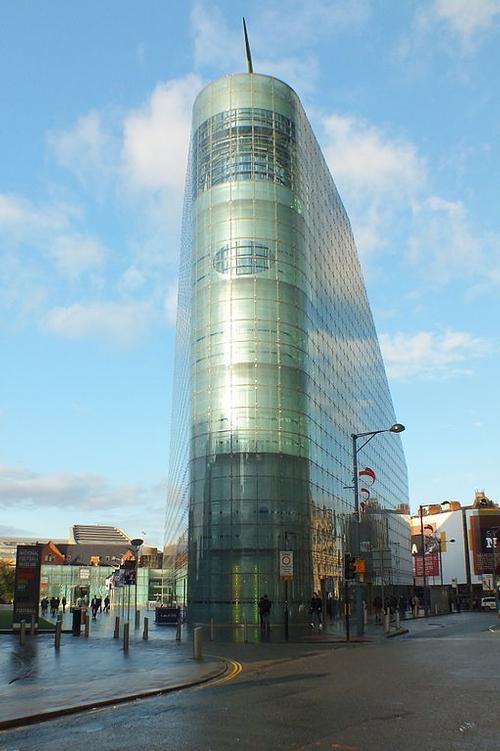 The Urbis building in ManchesterPhoto: Clem Rutter CC 3.0 Unported no changes made
The Urbis building in ManchesterPhoto: Clem Rutter CC 3.0 Unported no changes made
The Urbis, in the center of the city, was one of the first glass buildings in Manchester. With exciting interactive exhibitions, themed exhibitions, exhibitions on contemporary culture and seasonal events, it is worth a visit. The Urbis has a popular gift shop, the Conservatory Café and a well-regarded restaurant. Best known for its beautiful, modern glass architecture, Urbis is adjacent to the cathedral gardens and the corn exchange.
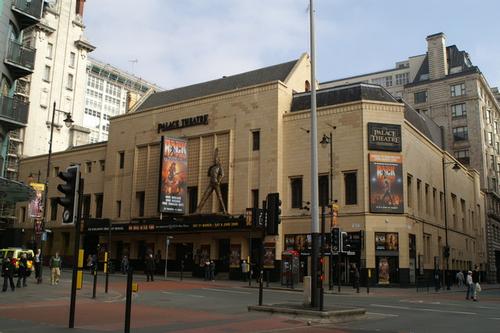 Manchester Palace TheaterPhoto: David Long CC 2.0 Generic no changes made
Manchester Palace TheaterPhoto: David Long CC 2.0 Generic no changes made
Manchester has a thriving theater life, an opera and a dance scene and is home to numerous major stages, including the Manchester Opera House. Large-scale shows featuring West End productions at the Palace Theater and the Royal Exchange Theater are featured here.
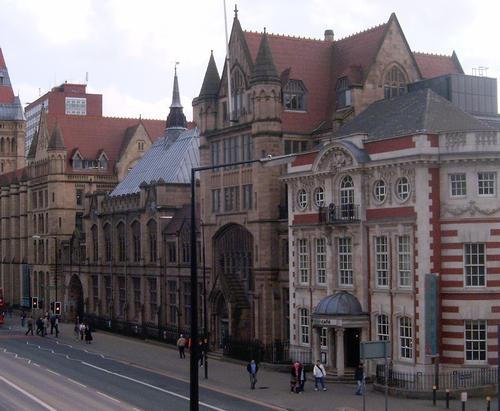 Manchester MuseumPhoto: Pit-yacker CC 2.5 Generic no changes made
Manchester MuseumPhoto: Pit-yacker CC 2.5 Generic no changes made
Manchester's museums exhibit objects from Roman history and rich industrial heritage, emphasizing the city's role in the Industrial Revolution. Opened to the public in the 1880s, the Manchester Museum has remarkable collections from ancient Egypt and fine natural history collections.
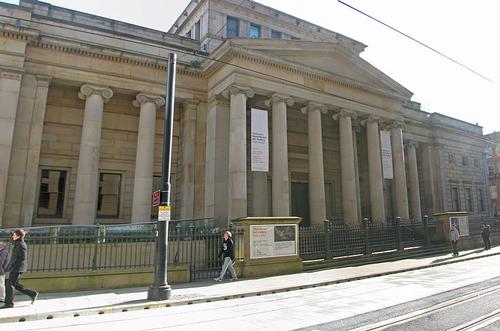 Manchester Art GalleryPhoto: Skip88 CC 3.0 Unported no changes made
Manchester Art GalleryPhoto: Skip88 CC 3.0 Unported no changes made
With an extensive permanent collection of European painting, the Manchester Art Gallery on Mosley Street is one of the most popular in the city and an imposing building. With a large collection of paintings, many of famous artists, such as Turner. You will find a café, restaurant, visitor center and a gift shop. The museum recently won the city's 'Great Visitor Attraction of the year' award and is easy to find on Mosley Street, just off Princess Street and close to City Hall.
Tips
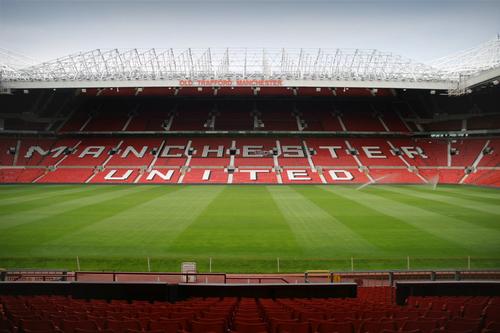 Old Trafford home to Man UnitedPhoto: André Zahn CC 2.0 Germany no changes made
Old Trafford home to Man UnitedPhoto: André Zahn CC 2.0 Germany no changes made
Manchester is known as a city of sports. Two Premier League football clubs are named after the city, Manchester City and Manchester United. Visiting a match is a highlight for many tourists.
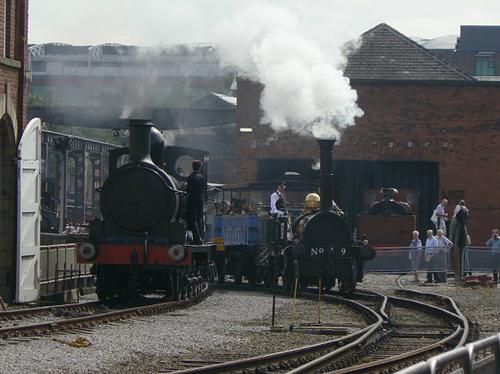 Museum Train Planet of the Manchester Museum of Science and IndustryPhoto: Alan Murray-Rust CC 2.0 Generic no changes made
Museum Train Planet of the Manchester Museum of Science and IndustryPhoto: Alan Murray-Rust CC 2.0 Generic no changes made
Located in the heart of the busy city center, the Museum of Science and Industry is especially popular with children of all ages. You will see many interactive exhibitions from the world of science, both past and present. Themes include computers, power, sewage, textiles, and transportation. There are exhibitions about steam trains and rockets. Especially popular are the regular steam train rides with carriages pulled by a beautiful working replica of Robert Stephenson's revolutionary 'Planet' locomotive.
Heaton Park in the north of the city is one of the largest urban parks in Europe with an area of 250 hectares. The city has 135 well-maintained parks and gardens.
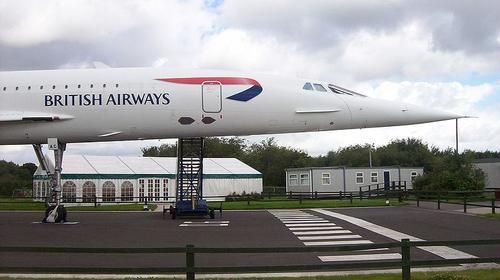 Concorde on display at Manchester Airport Photo: Public Domain
Concorde on display at Manchester Airport Photo: Public Domain
One of the few surviving Concordes, the most famous aircraft ever made, is now on permanent display at Manchester Airport. The Concorde was the world's first supersonic passenger airliner, and tourists and visitors to the airport can now book tours to view the aircraft. You can even get married on board this special Concorde.
Useful links Manchester
BBC Country ProfilesWorld Fact Book Explore all Countries
How to call
Last updated November 2025
Copyright: Team - The World of Info